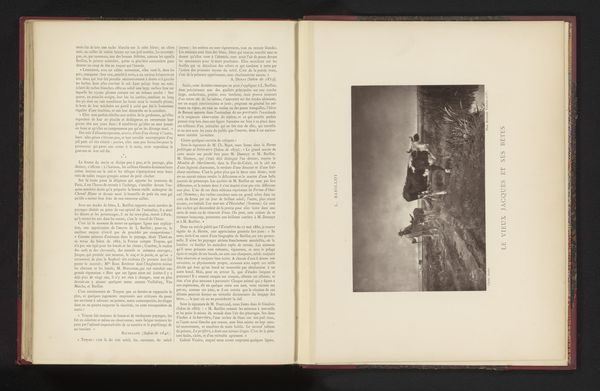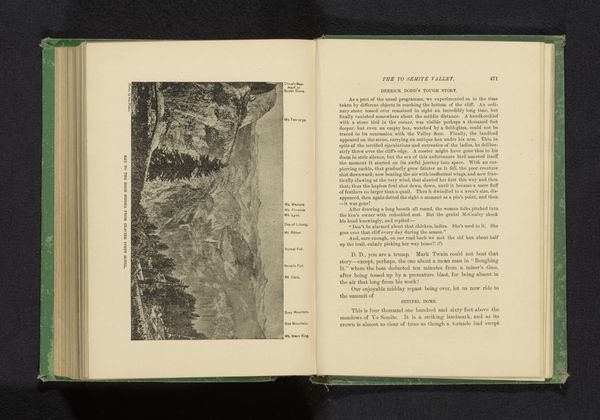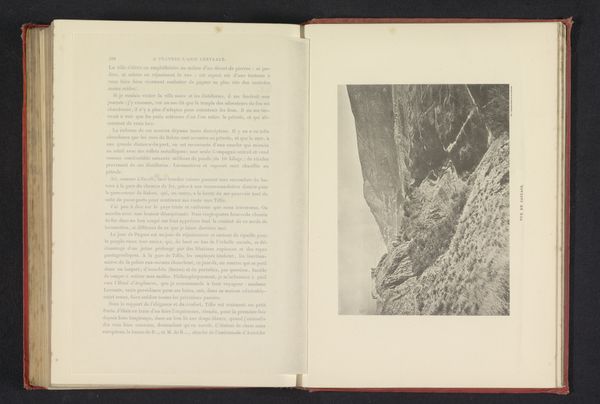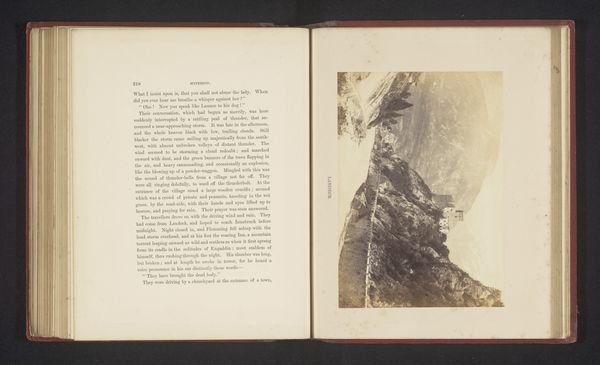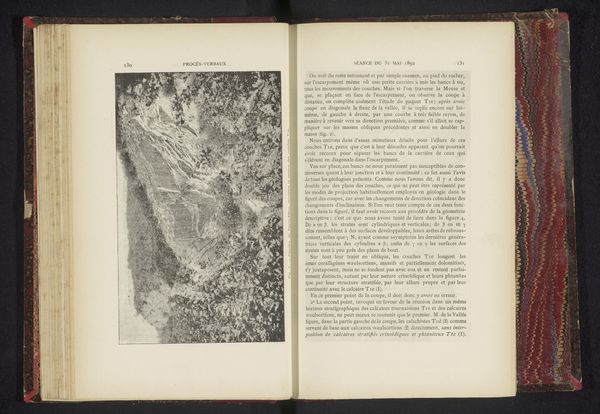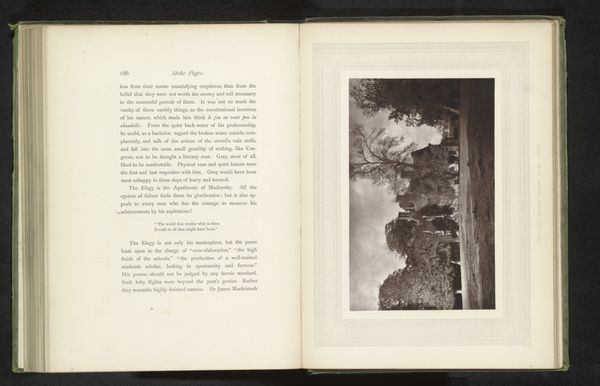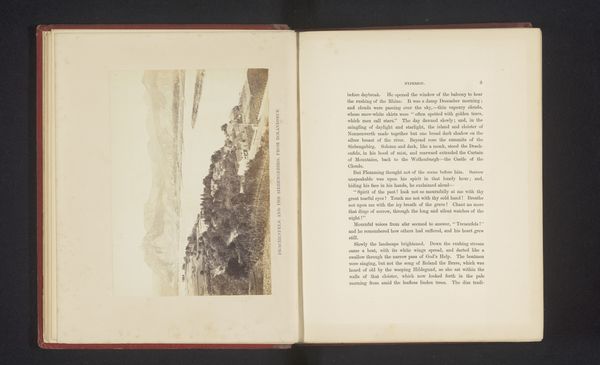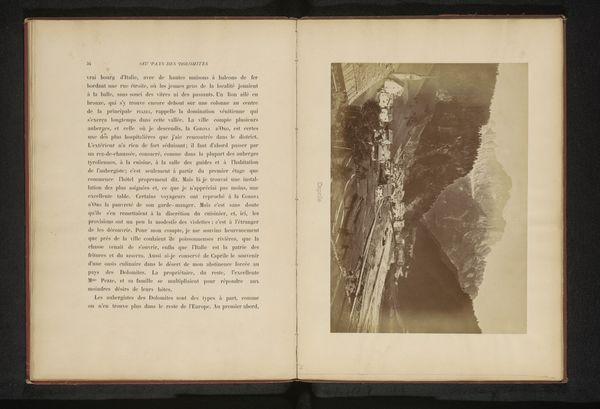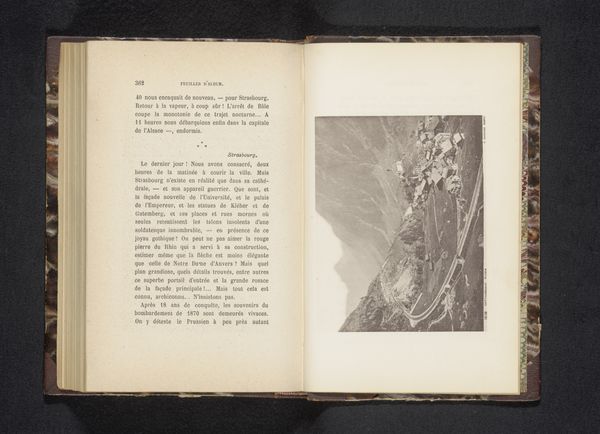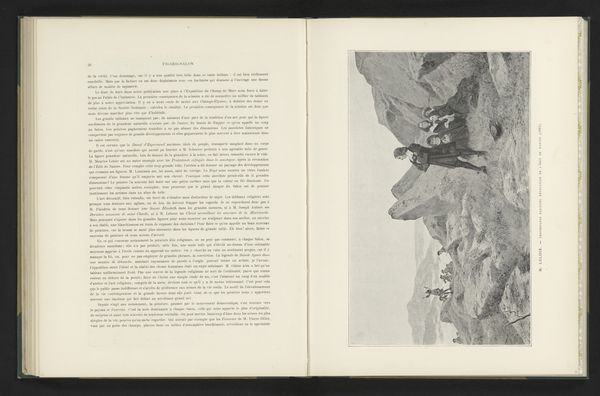
Fotoreproductie van het schilderij 'Un troupeau de vaches dans l'Oberland' door Félix de Vuillefroy-Cassini before 1884
0:00
0:00
print, photography
# print
#
landscape
#
photography
#
mountain
#
realism
Dimensions: height 185 mm, width 240 mm
Copyright: Rijks Museum: Open Domain
Curator: This image shows a photographic reproduction of Félix de Vuillefroy-Cassini's painting, “A Herd of Cows in the Oberland,” dating to before 1884. Editor: It’s stark. The near-monochrome landscape and looming mountains feel incredibly isolating, almost foreboding. The cattle seem precariously placed on the mountainside. Curator: I find that interesting because representations of Alpine landscapes like this became particularly popular during the 19th century. They're tied to growing national identities and ideas about the sublime power of nature. Consider how this romantic framing served very specific political and cultural purposes. Editor: That tension is visible, certainly. The seemingly humble cows contrast with the immense and somewhat hostile landscape. Who is this image for? Is it celebrating agrarian life or underlining humanity’s smallness in the face of the natural world? What stories did its commissioner and first viewers bring? Curator: Possibly both, simultaneously! Consider that realism, the movement to which de Vuillefroy-Cassini belonged, often served to validate existing social hierarchies by depicting "common" subjects. Representations of rural life reinforced ideas about national character. How might these narratives uphold social norms regarding gender, labor, and national belonging? Editor: I see your point, especially given that landscape paintings during that era often whitewashed the difficult labor and complex realities of rural life. Was this painting part of that trend, idealizing the Alpine experience? This makes me think about the workers and land that went into creating a place seemingly so untarnished, and who profited from those constructions of national beauty. Curator: Precisely. This is precisely the kind of layered context that brings an image like this into focus. It goes beyond merely appreciating the artistic skill. It compels us to think about its cultural significance and its active role in creating specific historical narratives. Editor: Yes, I was initially caught up in the atmosphere of the piece but locating it within its social moment gives me a sharper, more critical perspective on its power and what it says to contemporary audiences. Curator: Indeed, it is that interplay between historical and contemporary concerns that gives such art historical analysis continued resonance, isn't it?
Comments
No comments
Be the first to comment and join the conversation on the ultimate creative platform.
